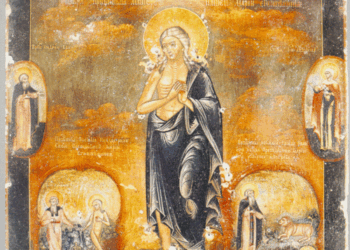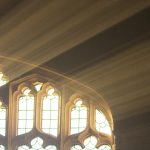But the bold Argentine A-4 Skyhawks’ efforts were all for naught: Argentina surrendered to the British the following day.
Among other things, the Vietnam War served as the real-world combat proving grounds for three famous U.S. Navy ground attack aircraft, namely the A-4 Skyhawk (most famous as the plane flown by John McCain), A-6 Intruder, and A-7 Corsair II. All three of these warbirds continued to serve with distinction in combat operations long after that war—with all three planes blasting their way back into the headlines in the 1991 Persian Gulf War, aka Operation Desert Storm (the Intruder and the Corsair in USN hands, the Skyhawk in the hands of the Kuwait Air Force).
In between Vietnam and Desert Storm, the A-4 Skyhawk was also battle-tested in conflicts wherein the United States was not a participant, though they certainly involved key U.S. allies: Israel during the 1973 Yom Kippur War and Argentina during the 1982 Falklands War (or as the Argentines themselves prefer to call it “La Guerra de Las Malvinas“)against the United Kingdom (America’s most faithful ally). Today, The National Interest shall focus on the latter variable of that deadly equation.
Argentine A-4 History In-Brief
Out of 2,960 A-4 airframes produced from 1954-1979 by the Douglas Aircraft Company (most famous for the game-changing SBD Dauntless dive bombers of World War II) and successor firm McDonnell Douglas (which in turn merged with Boeing), 130 were sold to Argentina, beginning in 1965, nine years after the Skyhawk made its maiden flight in American skies.
During “La Guerra de Las Malvinas,” the Argentines deployed a total of forty-eight Skyhawks. Though their feats weren’t enough to win the war, the Argentine Skyhawk pilots were deadly effective against Royal Navy shipping, sinking the following vessels:
However, the Skyhawks didn’t fare so well in air-to-air combat against the Royal Navy Fleet Air Arm‘s British Aerospace Sea Harriers; indeed, the Skyhawks were dead meat to the Harrier drivers, suffering eight shootdowns—as part of the Harriers’ mind-numbing 23:0 kill ratio—against zero aerial victories scored in exchange. Additional Argentine Skyhawk losses were:
- Seven ship-launched surface-to-air missiles (SAMs)
- Four to ground-launched SAMs and anti-aircraft fire
- Three to accidents
All in all, twenty-two Argentine Skyhawks were lost during the war, comprising 45.8 percent of the total deployed aerial fleet.
Which makes a convenient segue to the crux of this article.
Final Fighting Fight of the Falklands Skyhawks
As stated by the text caption of the Showtime 112 MSN channel video titled “The Last Argentine A-4 Airstrike (13 June 1982, Falklands)“:
“But on 13 June 1982, one day before the War ended, Skyhawks of the 5th Fighter Group attacked what they thought was a concentration of troops west of Port Stanley, the Islands capital. Their target turned out to be much more than just a troop concentration.”
That target turned out to be the field headquarters of 3 Commando Brigade under the command of then-Brigadier (later Major General) Julian Thompson.
Two four-ship flights of Skyhawks were slated for the mission: the “Nene” flight led by Capitan Antonio Zelaya, and the “Chispa” flight under Capitan Carlos Varela. However, Capitan Zelaya had to abort the mission due to fuel entering his engine intakes during aerial refueling, thus compelling him to delegate leadership of the strike to his deputy, Tenente (lieutenant) Luis Cervera. Another one of the Skyhawk drivers, Alférez (ensign) Gullermo Dellepiane, was late to the proverbial party due to hydraulics and navigation issues. The warbirds were armed with Spanish-made BRP-250 parachute-retarded 250-kg (551-lb.) general-purpose bombs.
The Skyhawks lost the element of surprise en route to their target when they were spotted by a British helicopter whose crew alerted the Sea Harrier combat air patrols (CAPs), but the Argentine pilots lucked out by managing to avoid the Harrier CAPs. However, Brigadier Thompson and his troops were even luckier: though many of the bombs landed within 50 meters of the command tent (easily within the kill radius for shrapnel from that type of ordnance), the planned group briefing in that command tent was delayed by two hours, thus averting a would-be decapitation strike and ensuring that the commando troops ended up physically unscathed. Two British helicopters, a Westland Scout and an Aerospatiale Gazelle, were slightly damaged.
Speaking of British helicopters, the Argentine Skyhawk pilots managed to strike one final blow during their egress from the target zone, as Tenente Cervera and/or Alférez Dellepiane, wielding their planes’ twin 20 mm Colt Mk 12 cannons, managed to damage the rotor blades of a Sea King whirlybird piloted by Lieutenant-Commander Simon Thornewill and forced the chopper to make an emergency landing. There are conflicting testimonies as to whether one or both Skyhawk pilots merited credit for the score.
All of the Skyhawks returned safely to base, as the British troops were unsuccessful in their efforts to shoot down the attackers with Blowpipe missiles. However, the bold Argentine pilots’ efforts were all for naught: their senior leadership surrendered to the British the following day.
Where Are They Now?
Amazingly, some Skyhawks still remain in service with the Argentine Air Force (Fuerza Aérea Argentina; FAA) to this day! According to the World Directory of Modern Military Aircraft, the FAA has eight A-4ARs—the so-called “Fightinghawk” variant—in the fighter-bomber role and three OA-4ARs (a two-seater version) in the fighter-trainer role.
In addition, roughly sixteen Argentine Skyhawks have been preserved for posterity as museum pieces, monuments, or military installation gate guardians, including the Museo Nacional de Aeronáutica (MNA) in Moron and the Museo de la Aviación Naval Argentina (MUAN) in Buenos Aires.
About the Author: Christian D. Orr
Christian D. Orr was previously a Senior Defense Editor for National Security Journal (NSJ) and 19FortyFive. He is a former Air Force Security Forces officer, Federal law enforcement officer, and private military contractor (with assignments worked in Iraq, the United Arab Emirates, Kosovo, Japan, Germany, and the Pentagon). Chris holds a B.A. in International Relations from the University of Southern California (USC) and an M.A. in Intelligence Studies (concentration in Terrorism Studies) from American Military University (AMU). He has also been published in The Daily Torch, The Journal of Intelligence and Cyber Security, and Simple Flying. Last but not least, he is a Companion of the Order of the Naval Order of the United States (NOUS). If you’d like to pick his brain further, you can ofttimes find him at the Old Virginia Tobacco Company (OVTC) lounge in Manassas, Virginia, partaking of fine stogies and good quality human camaraderie.
Image: Wikimedia Commons.

















